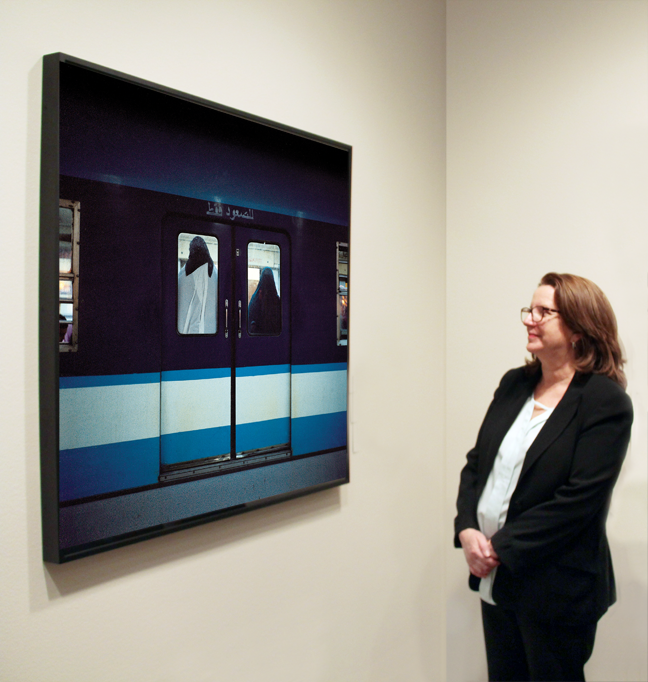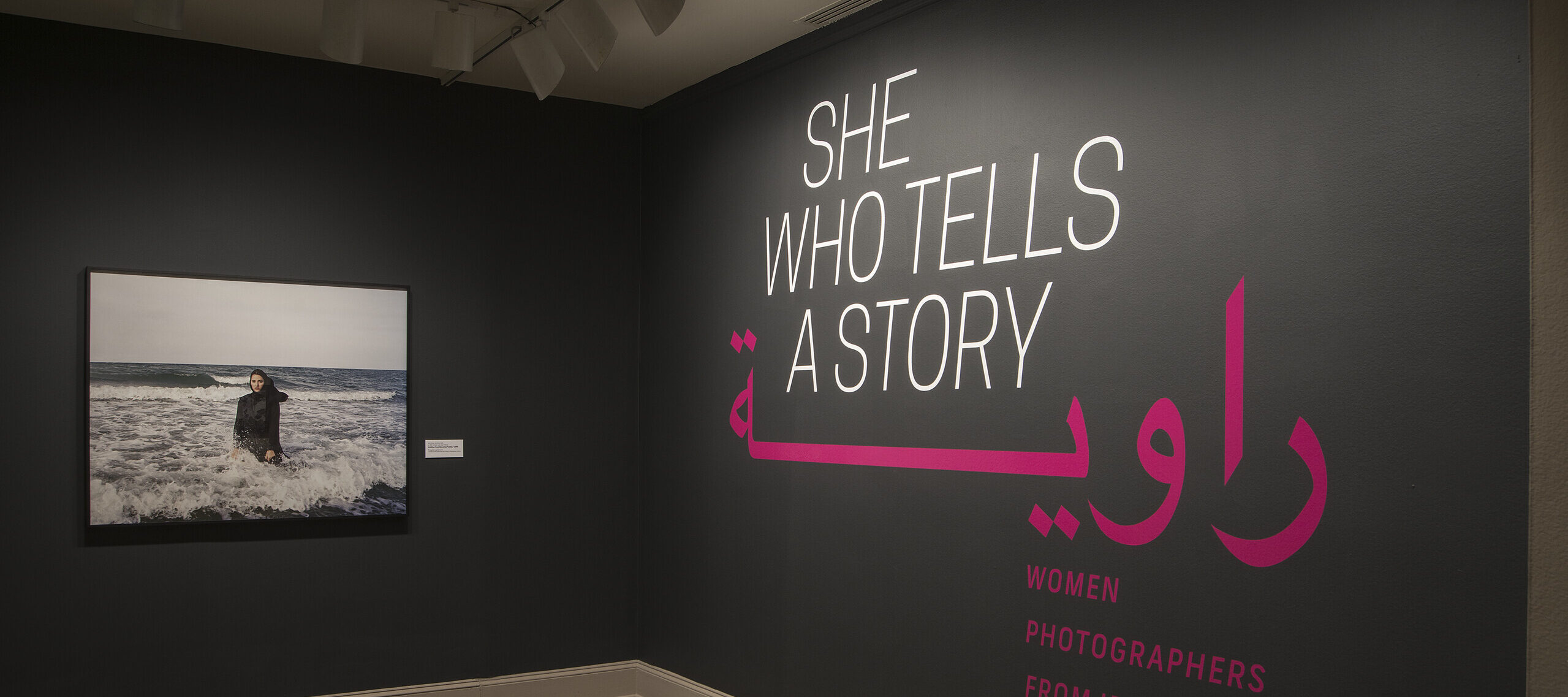In Arabic, the word rawiya means “she who tells a story.” Each artist in in NMWA’s summer exhibition She Who Tells a Story: Women Photographers from Iran and the Arab World offers a vision of the world she has witnessed.
Rana El Nemr
(b. 1974, Hanover, Germany; lives in Cairo)

Primarily working with conceptual photography, Egyptian artist Rana El Nemr captures urban stories that focus on ideas of space, identity, and the sense of belonging. She is also a co-founder of the Contemporary Image Collective (CIC), a platform for contemporary Egyptian art.
In Her Own Words
“I try [in the series “The Metro”] to capture the riders’ response to the urban underground, the train, the station, and its vibrant ceramic designs. Riders become figures defined by form, line, and color in the midst of a congested modernity in which they no longer have a sense of place.”—Rana El Nemr
“When I was watching people and watching the space, I became very obsessed by how the space made the people, some of the people who are using the space, how it made them so absorbed, and so kind of out of their body’s presence in a way.”—Rana El Nemr, WGBH News
What’s On View?
In four images on view from her series “The Metro” (2003), El Nemr inconspicuously photographs passengers in the first car of Cairo’s subway, which is reserved for women and children. Her subjects are shown seated or standing, often absorbed in thought. Some riders are only glimpsed through the car’s windows, as seen in Metro (#7). Conveying the anonymity of city life, El Nemr’s subjects seem to be alienated. The artist describes them as “vulnerable to cycles of depression, indifference, and religious intolerance—illnesses that are both caused by, and transmitted to, the rest of Egyptian and Arab society and the world.”

El Nemr’s photographs record the rapid changes that middle-class Egyptians encounter in the megalopolis of Cairo. Her works convey the displacement and belonging that affect interactions between people and public space. Metro (#7) depicts the backs of two subway riders through the blue-and-white exterior of the car. The pairing of their black and white abayas, each framed by a window of the closed doors, demonstrates the artist’s eye for asymmetrical compositions.
Visit the museum and explore She Who Tells a Story, on view through July 31, 2016.
